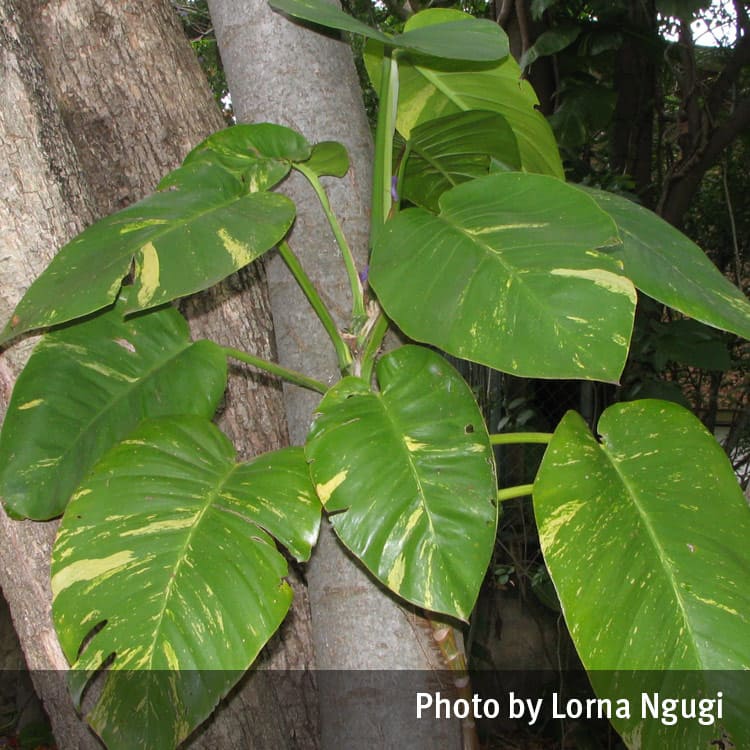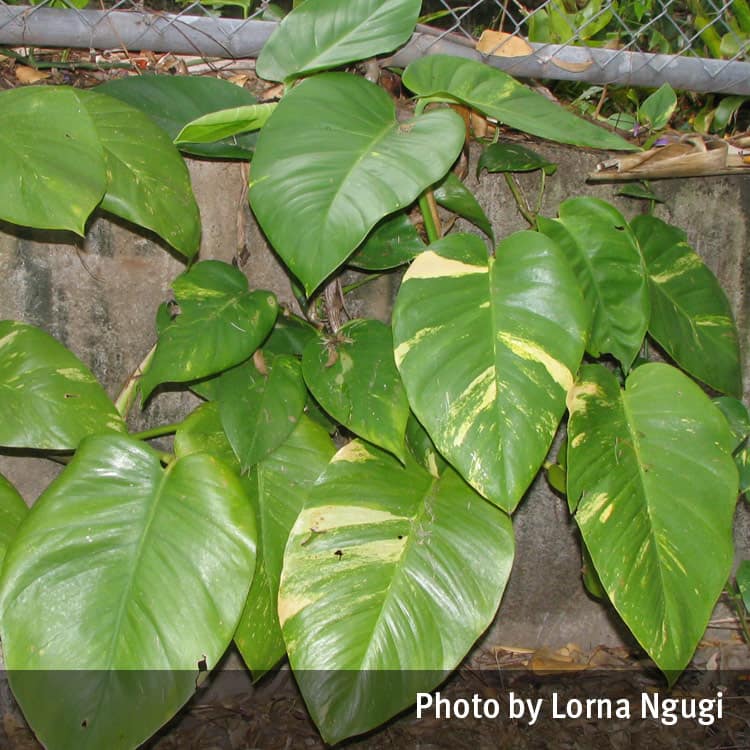Seek urgent medical attention if lips or tongue become swollen or if there is difficulty breathing or swallowing.
Description
Evergreen climbing plants cultivated as both indoor and outdoor specimens.
The flowers consist of a spathe or sheath around a central spike that is densely packed with very small florets. Flowers are not often seen in cultivation.
The heart shaped leaves can be green or variegated with white or cream, and are alternate on the stem. Mature leaves can be up to 100cm long and 45cm wide but are usually less than 20cm long in juvenile or potted specimens.
Toxicity
Symptoms
All parts of the plant contain needle-like calcium oxalate crystals, which if chewed or eaten, can cause immediate pain or a burning sensation and swelling of the lips, mouth, tongue and throat. The sap may cause contact dermatitis and eye irritation.
Images
Details
Common name: Pothos
Botanical name: Epipremnum spp. (previously known as Scindapsis spp. and Pothos, spp.) includes E. aureum, E. pinnatum
Other common names: Hunter’s robe, Marble queen, Devil’s ivy, Silver vine, Centipede tongavine, Money plant
Family: Araceae
General description: Evergreen climbing plants cultivated as both indoor and outdoor specimens.
Flowers: The flowers consist of a spathe or sheath around a central spike that is densely packed with very small florets. Flowers are not often seen in cultivation.
Leaves: The heart shaped leaves can be green or variegated with white or cream, and are alternate on the stem. Mature leaves can be up to 100cm long and 45cm wide but are usually less than 20cm long in juvenile or potted specimens.
Fruit/Berries: Not usually seen in cultivation.
Last updated: July 2023

